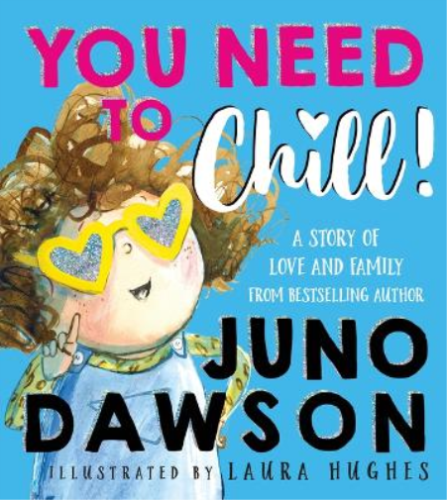You need to chill by Juno Dawson
KS2 lesson plan
Text: You need to chill by Juno Dawson Lesson plan by Andrew Moffat www.no-outsiders.com |
Enquiry Question: What has happened to Bill? |
Success criteria: I know we are all different / I know what judgement is / I can choose to be non-judgemental and accepting of others RSE links: Caring Friendships That healthy friendships are positive and welcoming towards others and do not make others feel lonely or excluded Respectful Relationships The importance of respecting others even when they are very different from them What a stereotype is and how stereotypes can be unfair, negative or destructive |
Starter: Consider the title; what does it mean to chill? Can you think of a context where someone might need to chill? Has anyone ever told you to chill? Look at the picture of the sofa on the first page; what are the clues to who lives here? What kind of family do you think lives here? Now look at the picture on the next page showing children arriving at school; what are the feelings in this page? What do you notice about the children and adults on this page (all different, all together, happy) |
Main: Read “You need to chill” up to the page where the sister says, "The truth is that my brother Bill..." discuss: - Why is everyone so worried about Bill? - Why do you think the sister keeps saying, "Hun, you need to chill" Why doesn't she just tell them where Bill is? - "Your hysteria is silly," what does this mean? - You could argue that it's good that everyone is worried about Bill; it shows they care. Or you could argue everyone should stop asking about him. If Bill hasn't told people where he is, and Bill's sister keeps avoiding the question, what should the other children do? - It looks like we are about to find out where Bill is. Any predictions? Continue the rest of the story. Discuss: - Look at the reaction from all the children at school, how do you think they feel about Bill being Lily? - "It was maybe quite a shock, at first, but she's really just the same" why was it a shock? What do you notice about the pronouns used on this page. Do you think pronouns matter? Discuss this. - Look at the family on the sofa; how do you think they feel about Lily? - "She's really just the same, " is she just the same? What do you think about this statement? Consider the statements on the next page; "She's still clever and funny, kind and cool..." It sounds like Lily hasn't changed at all. What do you think? - We never hear from Lily; how do you think she is feeling in the second half of this story? |
Activity: "And if people have a problem we shout Hun, you need to chill!" What do you think about this response? Is it effective? Why don't they confront people who have a problem and argue back? Look at the image on the final page where children hold banners. One banner says, "Don't be silly" why do you think that banner is there, who is it aimed at? "No need to get worked up" why is that banner there? Consider the different banners, which do you think is the most effective banner? Children choose one of the banners and write a response. For example, they could write a response to the banner, "Be kind" and explain why this story might be about kindness. Perhaps children might choose to create a different banner and explain their reasons for it. Different ideas and beliefs are welcome in our school; what is the most important thing to consider about your banner; what will be the impact of the words you choose to use on Lily? Why do we say there are no outsiders at our school, what does that mean, is it possible to show different ideas while still showing respect and kindness? The aim of this activity is to encourage children to develop their own response to inclusion and acceptance/ non-judgement. Plenary: Do you think Lily would want people to stand outside her school holding banners to support her? What do you think Lily would want? What do you think this story is about? What is the word used to describe Lily? Is Lily transgender? What is transgender? (Stonewall says, "Trans is an umbrella term to describe a person whose gender is not the same as, or does not sit comfortably with, the sex they were assigned at birth." What does 'assigned at birth' mean?) What does UK law say about a person who is transgender? The Equality Act 2010 has nine protected characteristics, one of which is gender reassignment. What are the others? (race, religion, sex, age, sexual orientation, disability, marriage and civil partnership, pregnancy and maternity) What do we say at our school about different people? Why is this about No Outsiders? Upper KS2 extension:" And if people have a problem..." Might might someone have a problem with Lily? Why? What is transphobia? Why do you think this book was written and what were the aims? What would we say at our school if Lily came here? |
For the full No Outsiders scheme of work with 42 lesson plans based on age- appropriate picture books, see No Outsiders: Everyone welcome, everyone different



Comments
Post a Comment